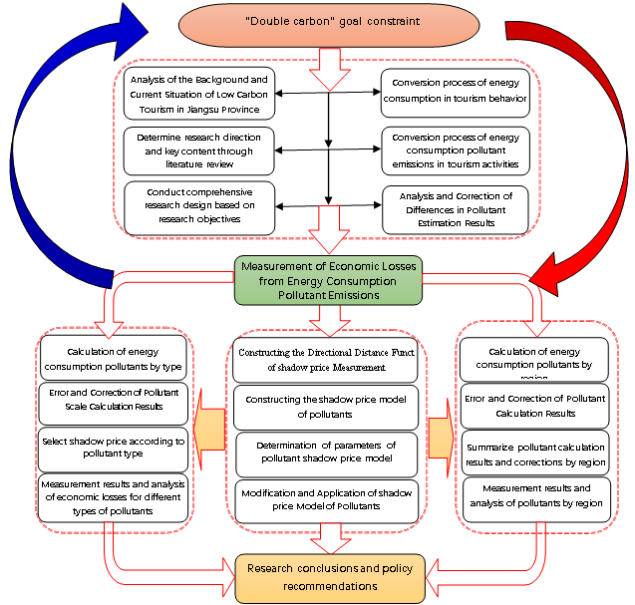
In order to explore the air pollution loss measurement of energy consumption pollutant emissions in low-carbon tourism in Jiangsu Province, this paper, based on background analysis, literature review and research design, selects 13 prefecture-level cities in Jiangsu Province as research objects, and investigates the Measurement of Air pollution Losses from Energy Consumption Pollutant Emissions in 13 tourism areas in Jiangsu Province by reconstructing the shadow price model of air pollution loss and using the statistical data from 2013 to 2021 provided by the government. It is found that: the air pollution loss caused by the emission of eight pollutants of low-carbon tourism energy consumption in Jiangsu province ranges from 142.92 million yuan to 253.93 million yuan, and the air pollution loss of low-carbon tourism energy consumption emission in 13 prefecture-level cities is the largest in Nanjing, which produces an air pollution loss of 387.69 million yuan in 2019, and the lowest air pollution loss year is 2020, with an air pollution loss of 2430.02 million yuan. Therefore, to reduce the air pollution loss of 13 prefecture-level cities as well as 8 energy consumption pollutants in Jiangsu Province, special attention should be paid to the maximum index as well as the minimum index, and the economic loss caused by the energy consumption pollutant emission of low-carbon tourism in the province should be controlled by strategies such as minimizing the maximum air pollution loss index as well as maintaining the minimum air pollution loss index.
Total file downloads: 5